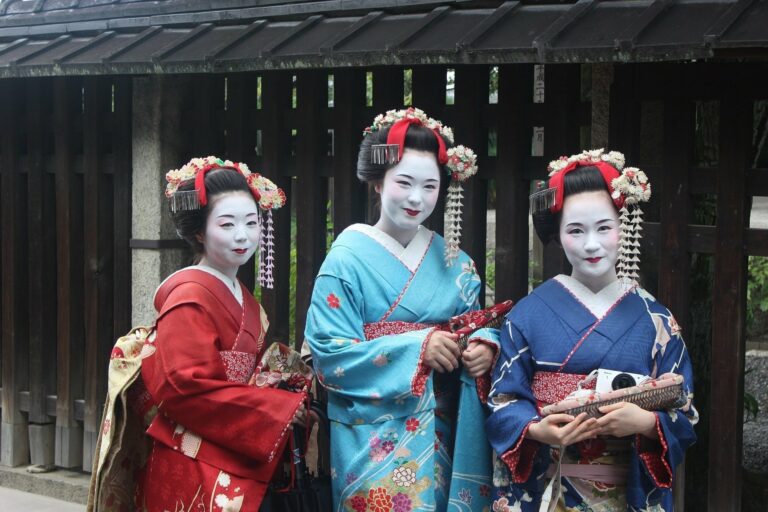You might think this is just another article extolling Japan’s incredible cuisine. Let me assure you, my aim is to give you an authentic taste of Japan’s finest local dishes. Japan’s culinary scene is diverse, ranging from sushi, an exquisite combination of vinegared rice and fresh fish, to ramen, a soul-soothing broth with noodles. Each dish is an exploration of flavor and tradition. Let’s embark on a journey through the gastronomic delights of Japan, where every meal is a narrative and an unforgettable experience for your palate.
In Japan, food isn’t just nourishment; it’s an art form. Take sushi, for example. It’s not merely raw fish atop rice; it’s about the quality of the ingredients, the precise cut of the fish, and the balance of flavors. Or consider the regional varieties of ramen, from the miso-infused broth of Sapporo to the pork-bone richness of Kyushu’s tonkotsu. These aren’t just bowls of noodles; they reflect the climate and culture of their origins.
Japan’s food landscape is rich with other hidden gems, too—like okonomiyaki, a savory pancake from Osaka that’s layered with various ingredients, or the delicate sweetness of Kyoto’s wagashi, traditional confections that are as beautiful as they are delicious. Each region has its specialties, shaped by history and local produce.
In exploring Japanese cuisine, you’ll discover that the preparation of each dish is steeped in tradition, honed over generations. The meticulous craft of making sushi, the patient simmering of a ramen broth, and the careful seasoning of a kaiseki meal—all reveal a dedication to excellence. It’s not just eating; it’s an experience that engages all senses.
As we delve into the myriad tastes of Japan, it’s not about hyperbolic praise; it’s about understanding and appreciating the depth of culinary skill and the stories behind each dish. Whether it’s a simple onigiri or an elaborate multi-course omakase, the food of Japan is a testament to its rich culture and an invitation to savor life one bite at a time.
Sushi
Sushi captivates me with each piece I taste. This exquisite dish, deeply embedded in Japanese tradition, has won over food enthusiasts around the globe. Its journey began as a method to preserve fish, evolving through time into a culinary art. Expert sushi chefs craft each piece, from the classic nigiri—a slice of raw fish atop a bed of seasoned rice—to inventive rolls such as the California roll, showcasing sushi’s versatility and appeal to various tastes.
Understanding sushi’s heritage is crucial to appreciating its complexity. Nigiri, for example, represents sushi in its most traditional form, while the California roll reflects its adaptability to Western preferences. When eating sushi, there’s a rich etiquette to follow. It’s appropriate to use either chopsticks or one’s hands, the latter being traditional for nigiri. Key accompaniments like soy sauce, wasabi, and pickled ginger not only complement the dish but elevate it, each adding a distinct dimension to the overall flavor.
Sushi isn’t just a meal; it’s an experience. As I enjoy both time-honored nigiri and modern sushi inventions, the craft and taste continue to astonish me. Sushi’s rich past, its variety, and its cultural impact make every bite an exploration of culinary mastery.
Ramen
Venturing beyond sushi, I’ve become enchanted by ramen, a staple of Japanese cuisine with a comforting embrace. Originating from China, ramen has blossomed in Japan into a culinary phenomenon, distinguished by its savory broth, supple noodles, and enticing garnishes.
Let’s delve into why ramen is an essential taste adventure:
- Regional Diversity: Japan’s regions each put a unique spin on ramen, offering a spectrum of tastes and preparations. Fukuoka’s tonkotsu ramen, known for its velvety pork bone broth, contrasts with Sapporo’s miso ramen, which delivers a rich umami punch. Sampling these local interpretations is akin to a flavorful tour through Japan’s culinary landscape.
- Dining Rituals: In Japan, ramen consumption is an art, complete with its own rituals. Enthusiastic slurping isn’t just permissible but recommended, as it infuses the noodles with air, heightening the flavor and signaling gratitude to the cook. Tradition also dictates finishing every morsel, honoring the chef’s work by leaving no trace of broth or noodles.
- Hearty Satisfaction: Ramen epitomizes comfort cuisine, ideal for cold days or hunger pangs. Its sumptuous broth, melded with delicate noodles and accoutrements such as chashu, ajitama (flavored soft-boiled eggs), and nori, delivers a symphony of flavors and textures that’s utterly captivating.
Takoyaki
Takoyaki is a beloved dish in Japan, often hailed for its unique texture that combines a crispy shell with a soft, savory center. These ‘octopus balls’ have gained fame as a staple street food across Japan, offering a delectable taste that food enthusiasts shouldn’t miss.
Crafting takoyaki involves creating a batter from flour, eggs, and the umami-rich dashi broth, which is then poured into molds specifically designed for these snacks. At the heart of each ball sits a tender piece of octopus, which is then cooked until it achieves a golden hue and a round shape. The contrast in textures—a crunchy exterior giving way to a tender interior—makes each bite of takoyaki exceptionally satisfying.
Takoyaki stands out due to its adaptability. It’s a common sight at Japanese food festivals, where vendors present an assortment of toppings, allowing you to tailor your takoyaki to your tastes. Options such as creamy mayonnaise, the tangy takoyaki sauce, wispy bonito flakes, and fresh green onions add layers of flavor. Each mouthful of these garnished octopus balls is packed with taste, making it an irresistible snack that will keep you coming back for more.
In essence, takoyaki isn’t just food; it’s a culinary adventure that reflects the essence of Japanese street food culture, offering an array of tastes and textures that are both comforting and exciting.
Yakiniku
Yakiniku, which translates to ‘grilled meat’ in Japanese, is an essential experience for anyone exploring the culinary landscape of Japan. As an enthusiast of meat dishes, I can assert that yakiniku stands out as one of the most rewarding ways to dine in Japan. Let’s delve into three key aspects that make yakiniku a top choice for food enthusiasts:
Firstly, the grilling method is a core element of yakiniku. You’re in charge at the table, whether you’re using a charcoal grill that infuses a smoky essence or an electric grill that offers precise temperature control. You decide how long to cook each piece and how charred or tender you want it to be. This hands-on approach isn’t just about cooking; it’s about tailoring each morsel to your personal taste.
Secondly, the caliber of meat served in yakiniku restaurants is top-notch. You’ll often find options such as sumptuous wagyu beef, known for its intense marbling and softness, alongside other premium selections like succulent pork belly and rich chicken thighs. Wagyu, in particular, is famous for its buttery texture, so much so that it literally dissolves in your mouth, offering an unmatched gastronomic pleasure.
Lastly, yakiniku dining is a journey of exploration. It encourages diners to broaden their culinary horizons by trying various meats, including traditional favorites and exotic choices like offal and beef tongue. The wide array of meats, combined with a plethora of dipping sauces and side dishes, allows for endless flavor combinations. Every visit can be a new adventure, as you mix and match to create your perfect bite.
Okonomiyaki
Okonomiyaki, a delectable savory pancake from Japan, perfectly combines taste and texture. Originating in Osaka, this dish has now spread across Japan.
‘Okonomiyaki’ means ‘cooked to your liking,’ highlighting its versatility. With different regional versions, the dish uses a variety of local ingredients. Hiroshima-style includes cabbage, noodles, and pork, while Osaka-style combines cabbage, green onions, and either seafood or meat into the batter.
The distinctive quality of okonomiyaki comes from its toppings. Common toppings are okonomiyaki sauce, which is akin to Worcestershire sauce but sweeter, mayonnaise, bonito flakes, and aonori seaweed, all enhancing the dish’s taste and presentation.
Okonomiyaki isn’t just food; it’s an expression of Japanese culinary innovation. Visitors to Japan shouldn’t miss trying it, as it showcases the adaptability of Japanese cooking.









